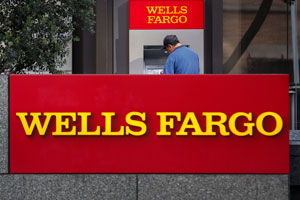Banks Fight to Keep Dividend From Being Used as Source of Highway Funding

At stake is an annual dividend of 6% the banks receive from the Federal Reserve, which totals less than $350 million apiece for JPMorgan Chase, Bank of America, Citigroup and Wells Fargo. The Senate wants to cut the dividend and use the money to help pay for a highway funding bill.
The threat of losing it became more serious last week when Senate Majority Leader Mitch McConnell told bank executives at a private meeting in Washington that there was no way he would remove the provision that reduces the dividend to 1.5% for banks with more than $1 billion of assets. House members now have to decide by month’s end whether to back the Senate’s approach before highway funding expires.
Even though it’s a fraction of the banks’ bottom line, the dividend cut has consumed lobbyists since July because it’s one of the few proposals that could hurt big banks and has the potential to become law in the current Congress. Lobbyists have held dozens of meetings with House staff and are evaluating whether to bring a lawsuit if it becomes law. They want to avoid setting a precedent they say would let financial firms become a piggy bank for future government spending and potentially pave the way for a tax on banks.
Their efforts may prove futile with lawmakers realizing the dividend cut could result in $17 billion in extra money for the federal government over the next 10 years, according to Congressional Budget Office estimates.
“The industry is in a very dangerous spot because it is a pot of gold,” said Karen Shaw Petrou, managing partner of Washington-based research firm Federal Financial Analytics. “With the general political climate I don’t know a lot of people on Capitol Hill that like banks.”
Spokesmen for JPMorgan, Bank of America, Citigroup and Wells Fargo declined to comment on the dividend cut.
During the last few months, lobbyists have met with staff for House Financial Services Committee members because they oversee the banking industry, including Chairman Jeb Hensarling (R-Texas), Rep. Bill Huizenga (R-Mich.) and Carolyn Maloney (D-N.Y.), according to people familiar with the discussions.
They’ve also met with staff for Paul Ryan, who is chairman of the House Ways and Means Committee, which is responsible for government spending bills, said the people who asked not to be identified because the meetings were private.
Since Ryan isn’t going to be able to reach an agreement on tax reform, which would have helped pay for the highway budget, he may have to accept other funding options such as the dividend cut, a person familiar with his thinking said.
The lobbying efforts spurred Huizenga to float a letter among lawmakers urging that any change to the dividend structure be deemed “premature” until they can study the issue, according to a copy of the letter obtained by Bloomberg News.
Their offensive also resulted in Hensarling urging the Government Accountability Office to study the rationale and implications of changing the dividend rate. GAO studies can take a year or more to complete.
Lobbyists also tried to appeal to staff for McConnell and Sen. Dianne Feinstein (D-Calif.) in private meetings without success. McConnell met with bank executives last week at a Financial Services Roundtable event, where he told them the dividend cut would be included in the highway bill sent to the House, said two people who attended the meeting.
A spokesman for McConnell didn’t respond to an e-mailed request for comment.
In preparation for the risk the dividend cut becomes law, lawyers for a banking trade group have already been mulling legal strategies to overturn it. They’re reviewing whether the action is considered a "taking," or using private money meant for the banks for public use, making it unconstitutional.
The industry may have an ally in Federal Reserve Chair Janet Yellen. She’s expressed concern over the dividend reduction, saying it “could conceivably have unintended consequences, and I think it deserves serious thought and analysis."
Senate Republican leadership initially offered the dividend cut proposal in July. Congress passed a short-term funding measure later that month that extended the highway funding through Oct. 29, which punted the issue and left banks with time to argue their case.
“The idea that going forward that we are going to pay for our nation’s infrastructure on the backs of one industry sector is a really flawed public policy,” said American Bankers Association Incoming President Rob Nichols.
The Federal Reserve Act requires national banks to hold stock in the 12 regional Federal Reserve banks for an amount based on their capital and surplus. Bankers aren’t allowed to sell or use the stock as collateral. In return, the banks receive a dividend from the Federal Reserve of 6%, a level it’s maintained since 1913. The stock and dividend structure was originally set up to incentivize banks to join the Federal Reserve system.
At the end of December 2014, the Reserve Banks paid dividends totaling about $1.7 billion.
The payout came under scrutiny last year, when a New Republic article on the “subsidy” to the banks noted the Congressional Progressive Caucus planned to suggest terminating the practice in its upcoming budget plan.
“It’s more awkward for the mega banks to lobby this issue,” said Camden Fine, president of the Independent Community Bankers of America, which advocates for smaller banks. “If the mega banks were high in popularity we could pretty easily get this knocked out, but they’re not.”

